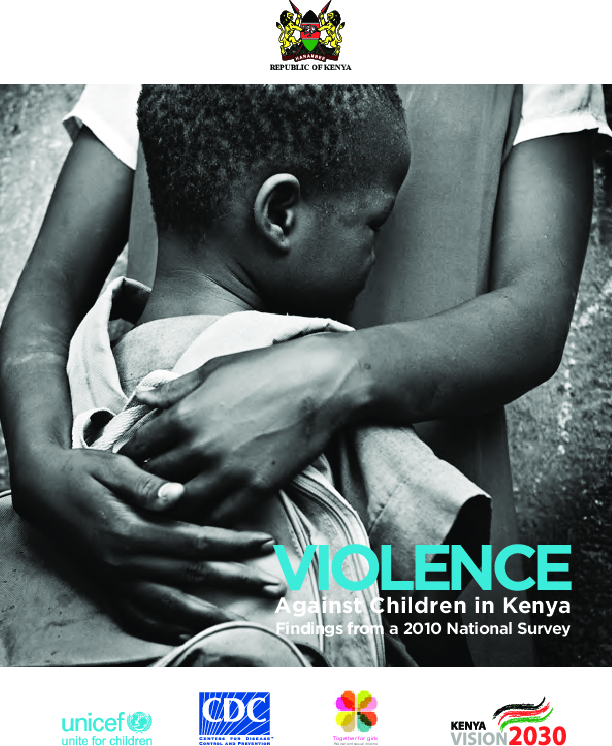
Reports
Violence against Children in Kenya: Findings from a 2010 National Survey. Summary Report on the Prevalence of Sexual, Physical and Emotional Violence, Context of Sexual Violence, and Health and Behavioral Consequences of Violence Experienced in Childhood
Publication year:
2012
English
Format:
pdf (2.1 MiB)
Publisher:
The 2010 Kenya Violence Against Children Survey (KVACS) was funded by UNICEF and carried out in collaboration with the U.S. Center for Disease Control and Prevention, the Kenya National Bureau of Statistics, crucial stakeholders and partners from across the government and the non-governmental sector.
Findings from the household-level survey of more than 3,000 young people indicate that violence against children is a serious problem in Kenya. The report pays considerable attention to sexual violence, and the implications of sexual violence for a population striving to overcome a legacy of subjection of women to sexual and gender based violence.
Levels of violence prior to age 18 as reported by 18 to 24 year olds (lifetime experiences) indicate that during childhood, 32% of females and 18% of males experience sexual violence. 66% of females and 73% of males experienced physical violence and 26% of females and 32% of males experience any violence as a child. 13% of females and 9% of males experienced all three types of violence during childhood. Most worrisome is that violence against children does not appear to be random or uncoordinated, or perpetuated by strangers: abusers are not only known to their victims but often have close, personal ties. This means that a child is most often beaten, slapped or hit by a parent. A child is most often sexually abused by a romantic partner or boyfriend or girlfriend, or even a family member. The consequences of this violence can be lasting and enduring for both the victims and communities as a whole. The report also noted that victims of childhood violence are more likely to engage in risky behaviours such as drug and alcohol abuse, sexual relationships with multiple partners and unprotected sex. Young women are more likely to become pregnant with unwanted pregnancies and the risks of exposure to sexually transmitted diseases, such as HIV/AIDS, are considerably higher.
The report calls for increased efforts to protect children against violence at home, at school and in the community.
Read full abstract
View & Download
Document information
Format
Content type
Country
Region
Rights
© Author/Publisher
Found a mistake? Help us improve!
If you have noticed a document assigned to the wrong author or any other inaccuracies, let us know! Your feedback helps us keep our data accurate and useful for everyone.
Share
Link
